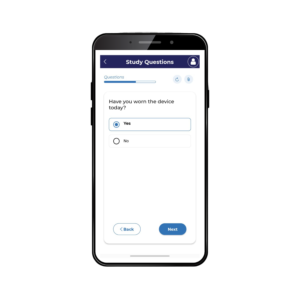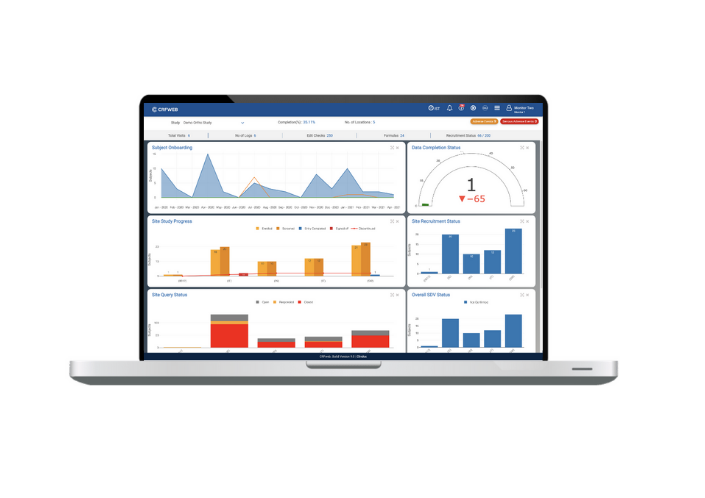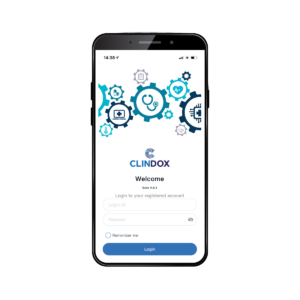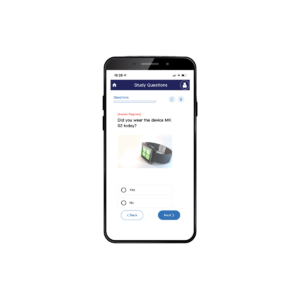We look at why EDC make sense for the IVD sector as it gets to grips with the data demands of IVDR
We review why the unique demands of IVD requires specialist eClinical applications and introduce our new module designed to meet these demands.

This article will take a closer look at:
- What the impact of IVDR will be for new and exisiting products
- Why it’s important to act now, extended tranisiton period notwithstanding
- Where the pinchpoints are likely to be
- How EDC will help ease the pressure on manufacturers as they seek to gain or retain approval within the EU
IVDR and digitalizing the collection of data
IVDR is now a reality and Clindox is here to help with our all-new Lab App
IVDR: where are we now?
26 May 2022 – the IVDR date of application – has come and gone, and mercifully, the sky has not fallen in. The transition timeline extensions announced last October were greeted with much relief but manufacturers emphatically should not adopt a more relaxed approach to meeting their IVDR obligations. There remains the very real danger of too many companies kicking their cans down the road leading to the MedTech ‘Cassandra’ prediction of an MDR/IVDR conformity capacity crunch in 2024 becoming a self-fulfilling prophecy.
It’s still the case that under IVDR between 80 and 90% of all devices on the market in the EU will need to undergo a conformity assessment by a notified body (NB); the only exceptions being Class A, non-sterile devices. All new devices will need to conform with IVDR. Similarly, under IVDR, it’s still the case that ALL manufacturers must implement a quality management system (QMS). All Manufacturers (other than those that only produce only Class A, non-sterile IVDs) will need to have their QMS and their Technical File or Design Dossier audited by a Notified Body. The QMS will need to conform to the ISO 13485 standard. If all this were not enough, IVDR significantly expands the obligations on manufacturers to deliver enhanced Post Market Surveillance (PMS). IVDR Article 78 states that manufacturers should have for each device, a well-structured PMS system that is appropriate for the risk class and device type. Furthermore, the PMS must be planned, documented, implemented, maintained, updated and integrated into the manufacturer’s QMS.
Although the revised timelines will help smooth the load, there remains the very real concern that there will simply be insufficient Notified Body capacity to meet the conformity assessment demands of MDR and IVDR over the next few years. The firm advice is therefore not to slacken the pace to become IVDR/MDR ready. The later it’s left, the more likely it will be that a company will be hamstrung by the inability to engage with a notified body in a timely manner and could be faced with having to withdraw devices from the market.
More and Better data
At the heart of IVDR – as with MDR – is the need for more and better data. It’s hard to argue against EDC as a key enabling technology to achieve these aims and we’ve discussed this in depth elsewhere:
Paper to EDC: making the business case for the smaller MedTech SME
Sustaining profitable market access under MDR: the PMS & PMCF business case for EDC
EDC pricing: getting value for your money
It’s also vital to recognize that any QMS is only as good as its data inputs and as such, the path to achieving ISO 13485 will be made vastly easier if the QMS is integrated with a clinical EDC (eClinical) system. Similarly, the use of an eClinical system will support effective remote auditing by the Notified Body for IVDR or MDR compliance – seen as the only realistic way to ensure that Notified Bodies will be able to meet the tsunami of demand in the coming years.
Won’t our LIMS do the job?
LIMS (Laboratory Information Management Systems) are excellent software platforms that help with the day-to-day management of samples and associated data. Some of the vital functions they provide are supporting workflow automation, storage of QC data, reagent tracking, instrument run monitoring and downstream data analysis. However, they are simply not designed to gather, manage and report on clinical study data and repurposing existing functionality is both clunky and incomplete… leading to a lot of offline manual processing.
How the Clindox Lab App will help you
Clindox is delighted to announce the launch of our unique all-new, fully integrated CRFWEB Lab App. We know through discussions with our customers that trying to shoehorn an eCRF designed for collection of patient data in clinical investigations for medical device studies will not always meet the needs of IVD manufacturers.
Even with a highly flexible, easy-to-use, best-in-class eCRF such as CRFWEB, we recognized that we needed to go the extra mile and create a new module that would meet the very specific clinical study needs of IVD manufacturers, one which would fully support their drive to be IVDR compliant.
The Clindox Lab App is fully integrated with CRFWEB and benefits from the full range of its core EDC capabilities including:
- Real-time data entry
- Source Data Validation (SDV)
- Full audit trail
- Data locking
- Randomization
- Role-specific access and functionality
- eCRFs templates transferable between studies
- Offline data entry and local caching to reduce network dependency
- Customizable data entry controls to prevent invalid entries, raise and resolve queries and support conditional branching for defined form questions.
- Mandatory and optional questions
- Mobile App access
- Easy data exports in standard formats

The Lab App module features access to the full range of question types found in the CRFWEB eCRF but has been customized to meet the very specific needs of clinical studies with respect to laboratory samples. The Lab Technician module is highly configurable and very easy to use. It is straightforward to design an online form for real time data entry that has all the familiarity of the paper-based forms widely used now, but with none of the evident drawbacks of such legacy approaches. Forms created in the module offer the following specific functional capabilities our customers have asked for:
- The ability to add any number of additional questions before or after the sample grid (e.g Randomization number)
- Useful, context specific data filtering and searching – e.g. searching for sample numbers or filtering to view all data validation failures.
- Viewing up to 100 entries on single page (configurable)
- Data Quality controls that ensure that all mandatory questions have been answered before the form can be submitted
- The ability to easily add new rows to the form should it be necessary to retest a sample
- Supporting questions that require user-customizable tabular layouts with multiple rows and columns.
- Supporting a mixture of tabular and non-tabular controls on the same form
- Interruption support: Where testing is interrupted, partially completed forms can be saved without triggering SDV.
- The forms can be pre-populated from imported files (.csv or .xlsx).
Providing more and better data inevitably impacts the bottom line. IVD manufacturers will have their work cut out for them providing IVDR compliant PMS data. Without question an eClinical system that can alleviate the pressure on lab staff to deliver will be an investment that will pay for itself in short order. The graphic below summarises the features, benefits and impacts of the Clindox Lab App:
How Clindox can help you
Clindox has a natural advantage over many of our competitors as we can leverage the benefits of:
– Long established, low cost-base development and support centres of the highest calibre
– High degree of sponsor self-sufficiency for study builds (with cost-effective client onboarding processes and expert support as required)
– Solution stack delivered through a simple, flexible SaaS model
Objectively, cost-plus – the true driver obscured by the smoke and mirrors of pricing plans – favours our offer and to this end you will find our proposals will be far simpler than any of our competitors and notable by the absence of arbitrary, hard-to-justify significant variability.
All in all, we know that with our low cost-base and our ongoing commitment to self-sufficiency, simplicity and transparency, we will always provide an excellent value proposition without compromising on features or quality… whichever sector you’re from, and whatever your study or investigation needs are.







